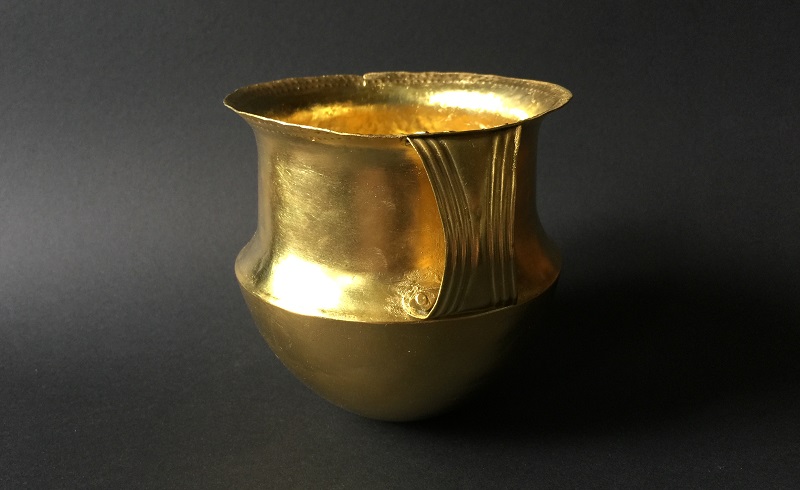The three local researchers from the Fritzdorf Volksbildungswerk near Bonn actually thought that their evening of lectures on local history in the spring of 1954 would take a completely normal course. But it turned out quite differently: When it came to early historical vessels, a farmer from the area and listeners suddenly called out on this memorable evening that he had already found something similar in his field: The later so important “Golden Cup from Fritzdorf ”. The three local researchers could hardly believe what they were hearing.
When excavating a so-called beet heap (temporary storage of beets after the harvest at the edge of the field), the farmer came across a clay pot with his spade, which immediately broke and therefore revealed its valuable content: the said Fritzdorf gold cup.
The farmer took the mug and initially placed it on his living room table as an ornament. It was only when he hesitantly left him to the speechless local researchers for examination after that memorable evening that it turned out that the mycenaean Mug is about 3500 years old and consists of over 200 grams of pure gold.
The Rheinisches Landesmuseum in Bonn then acquired the mug as a highlight for its permanent exhibition - after all, it was one of the most important finds ever made in the Rhineland until then - and according to tradition, the lucky finder was able to look forward to a significant expansion of his farmland. Some even say he has a brand new one Lanz tractor Bought.
We were just as surprised and delighted almost 70 years later when we had a customer a replica ordered from this beautiful "gold cup from Fritzdorf". The replica was to be hand-hammered from fine silver (999,99 silver grade) and then fire-gilded inside and out. It didn't necessarily have to be an exact copy, but the cup should be as close as possible to the original.
Of course, we first obtained the approval of the directorate of the Rheinisches Landesmuseum in Bonn (“RLMB”), since the original find is one of the most important exhibits in this museum and we can look back on a trusting cooperation with the RLMB for many years.
Our unusual request was received there with friendly benevolence. And not only that: We were even provided with more detailed photos of this mug. Our special thanks therefore go to the RLMB team, who have once again supported us with their expertise in our projects.
So now we were finally able to get down to work - the mug should soon be given as a birthday present to someone celebrating an anniversary - and ordered the pure silver in the form of matching finished sheets:
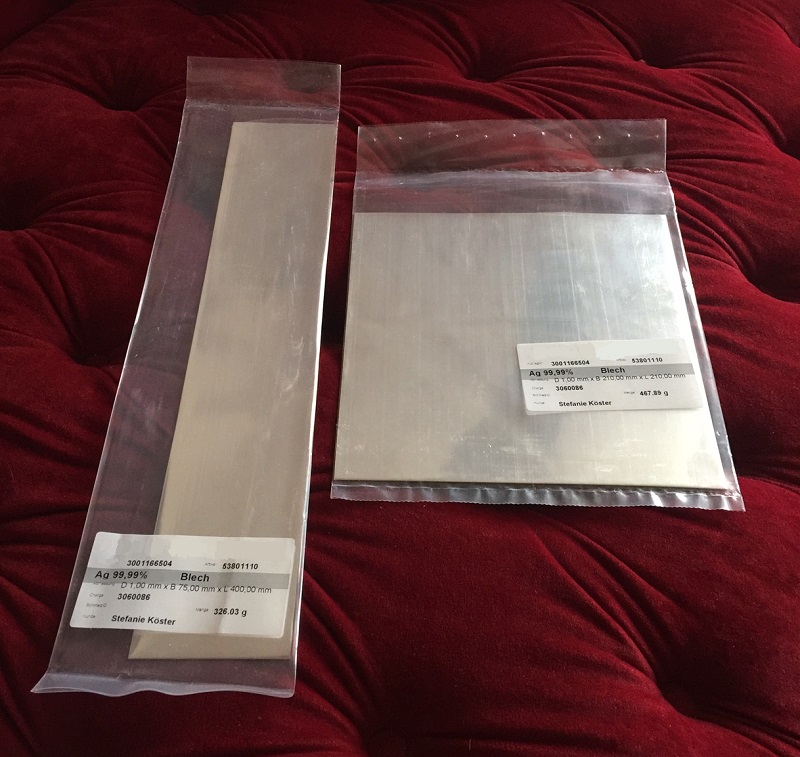
At the moment it is hard to imagine that a mug with a convincingly antique look can be created from this modern and mirror-shiny sheet of silver. But with a lot of patience and manual work, you can do that too. 😉
The sheet metal for the lower part of the cup was first sawn out in a circular shape and then later “driven”, i.e. hammered, into the required shape with special silversmith hammers and a driving mold that fitted as precisely as possible. At the beginning, however, the coarsest hammer and our largest ball anchor from our workshop was just right for us: 😉
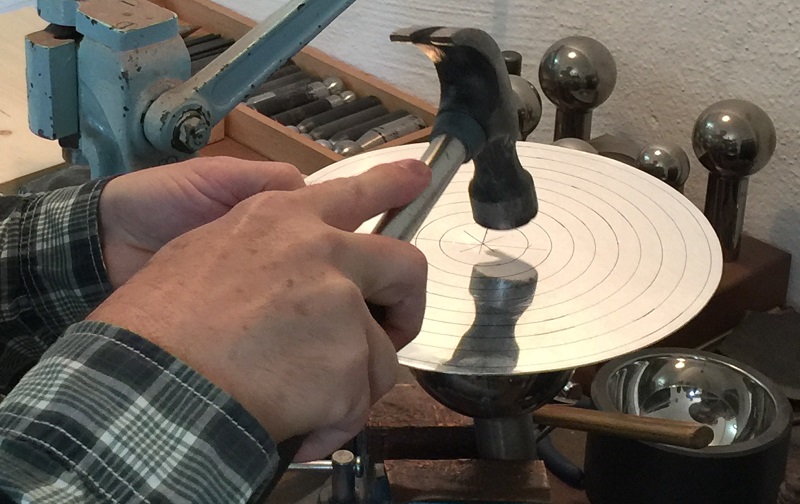
Since the fine silver, which is initially very soft, is very strongly compressed and thus hardened by cold forging, the work piece has to be annealed “cherry red” again and again after each hammering with the gas burner so that the precious metal can “relax” and can be used again for the next forging process becomes soft.
Here the almost finished raw form of the lower part of the cup is already in the burner cabin and is already waiting for the next annealing cycle:
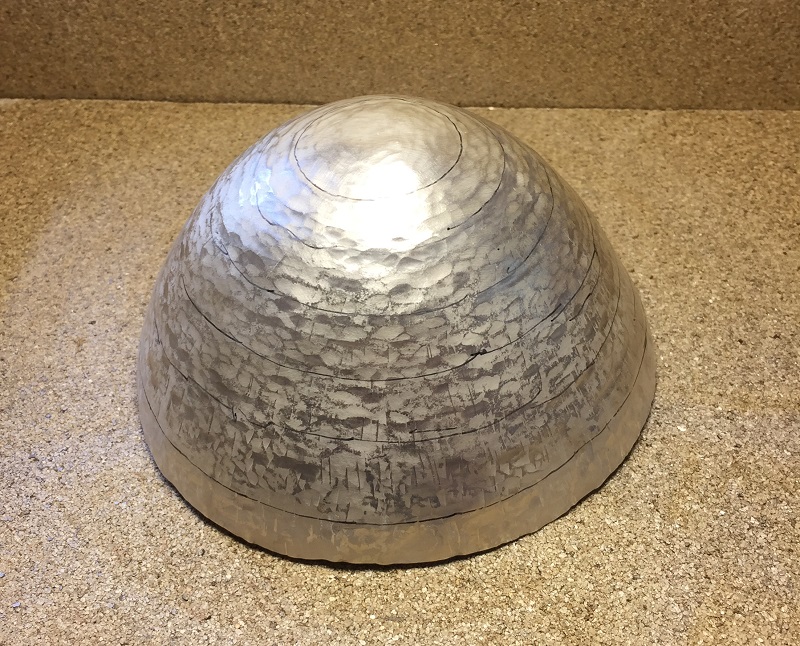
For driving the upper half of the cup, we made a negative mold from historical and particularly hard oak wood, which has the exact contours of the top ring of the cup. With their help, the large sheet of silver, previously soldered together in the form of a ring, can now be hammered into the desired shape:
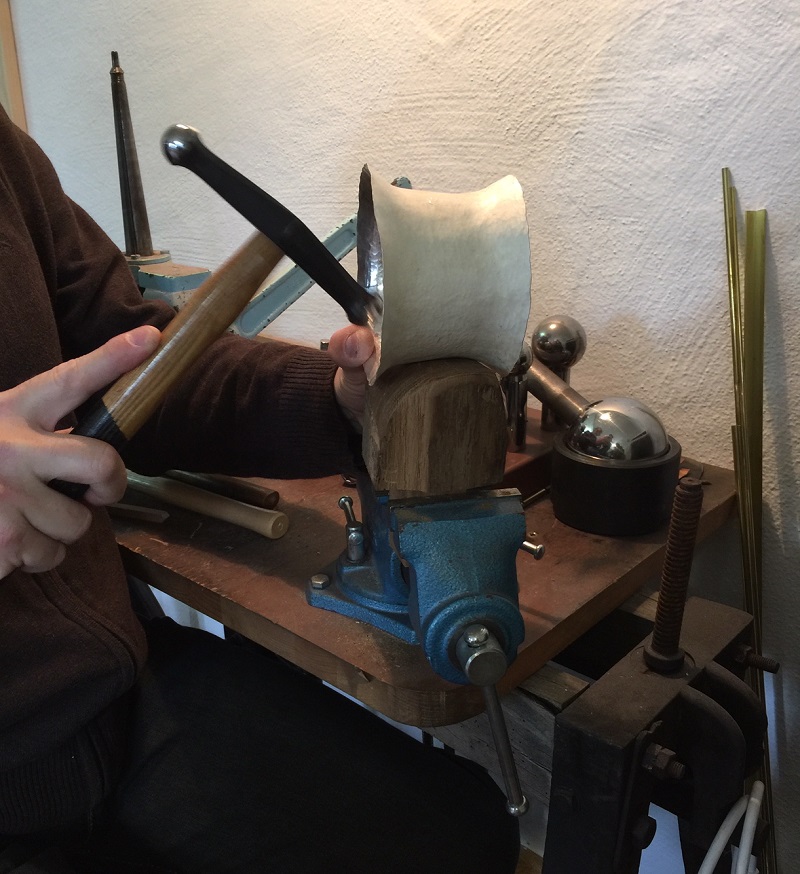
Now follows what is probably the trickiest part of this exciting project: Both halves of the cup must be soldered together so that they fit together perfectly. Although both forms can possibly warp due to the high heat, it must still be possible to achieve an absolutely tight and coherent soldered seam.
First of all, small balls of silver solder are required for soldering, which can be placed on the edge of the cup to be soldered. This process is quite “videogenic” as the solder magically transforms into small globules as it glows:
The silver solder balls obtained in this way can now be used together with so-called Flux placed on the transition between the two cup halves to be soldered and then melted by intense heating. This creates an extremely stable connection between the two silver parts.
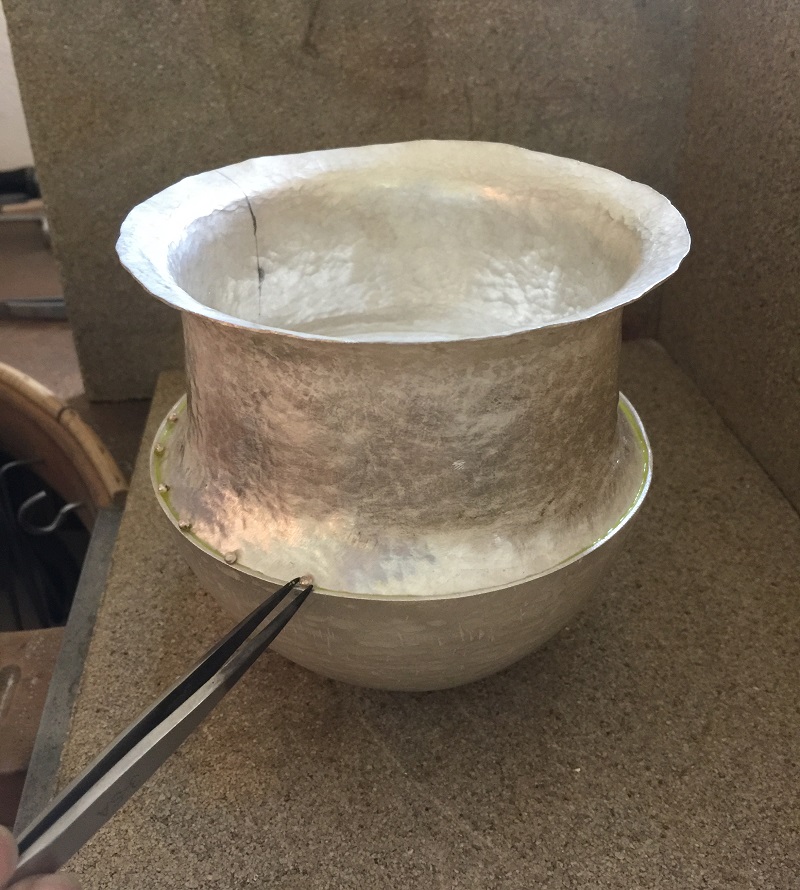
So the most exciting part of making the “Fritzdorf Gold Cup” is the big soldering seam. Everything really has to work here. But the cup really has nothing to smile about in this work step: 😉
Wonderful. Everything worked out. The soldered seam is completely closed and beautiful. Now the transition between the two halves of the cup could be cleaned up. This creates this distinctive small heel in the middle of the mug, which is also clearly present on the original.
Now it was the turn of the complex surface design. Not every single one of the signs of aging should be transferred absolutely identically, but the hallmark on the upper edge and of course the upper gap caused by the spade cut by the finder at the time should in any case also be reproduced on our replica. This was also particularly important to our customer for his famous “Fritzdorf Gold Cup”.
In addition, the all too clearly visible hammer marks from the previous hustle and bustle of both halves of the cup had to be removed and the surface structure had to be as close as possible to the original.
After the somewhat tricky production and true-to-the-original attachment of the handle decorated with longitudinal grooves worked perfectly - for this, true-to-the-original silver rivets and diamond plates had to be made - the now finished silver cup could be handed over to our specialist company for fire gilding. There are only very few experts at all able to meet the high environmental requirements due to the high amalgam or mercury pollution of the environment and the employees and thus to completely rule out any contamination by these pollutants.
In any case, our customer was already very satisfied with the pictures of the finished silver cup sent for approval and was therefore happy to give his OK for the still outstanding gilding.
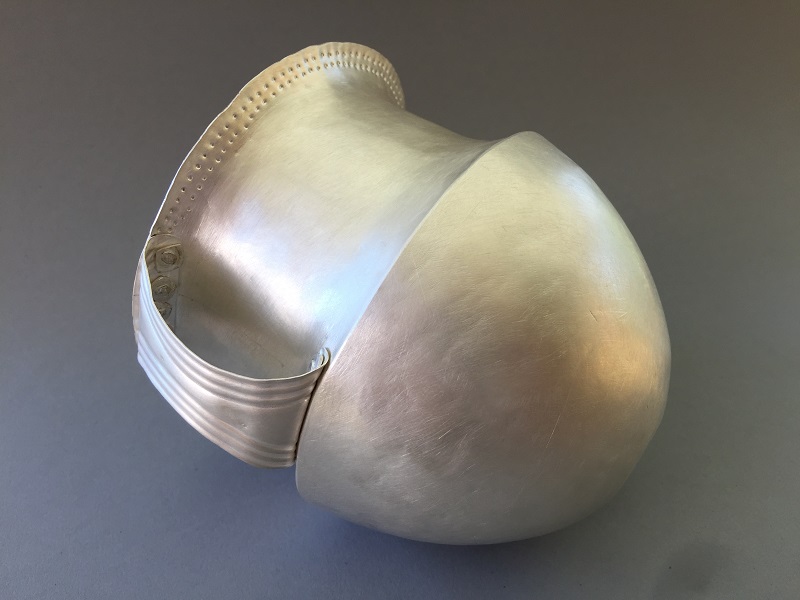
Our specialist company for fire gilding has once again delivered a real masterpiece. Almost 14 grams of pure gold were applied to the entire surface of the cup, inside and out, by fuming the gold-bearing amalgam. This type of gilding is almost 10 times thicker than, for example, galvanic gilding and is therefore ideally suited for such high-quality historical replicas. This often even corresponds to the type of gilding that the antique goldsmiths used on the original at the time.
In any case, the finished “Golden Cup from Fritzdorf” was also a new highlight for us among the extremely exciting commissions for historical replicas this year. He will always be a very special memory for us - somehow we even "fell in love" with the cup... 😉
Here are a few more detailed shots from our extraordinary excursion into the world of silversmiths:
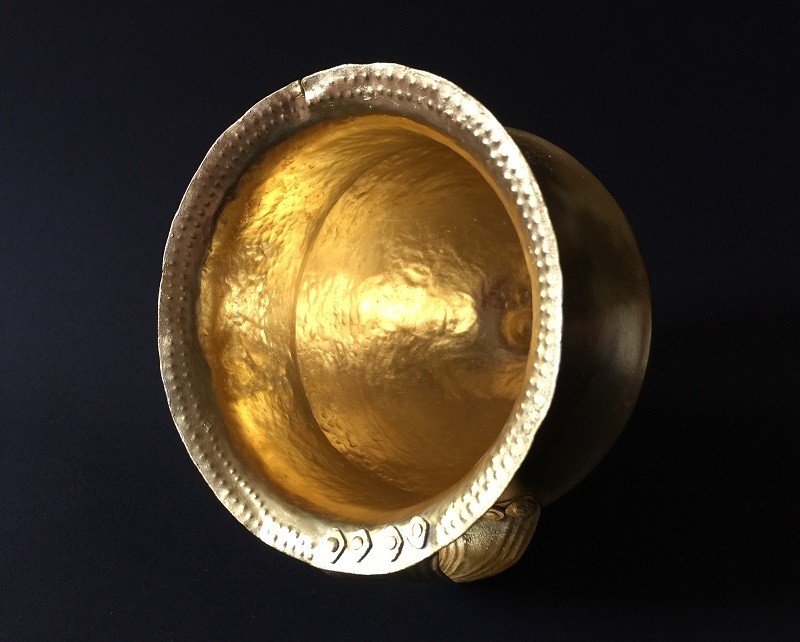
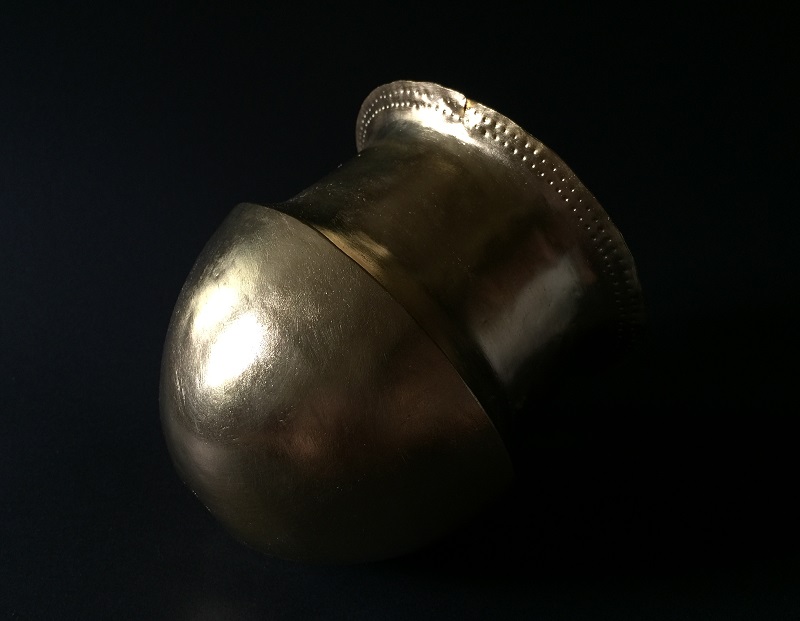
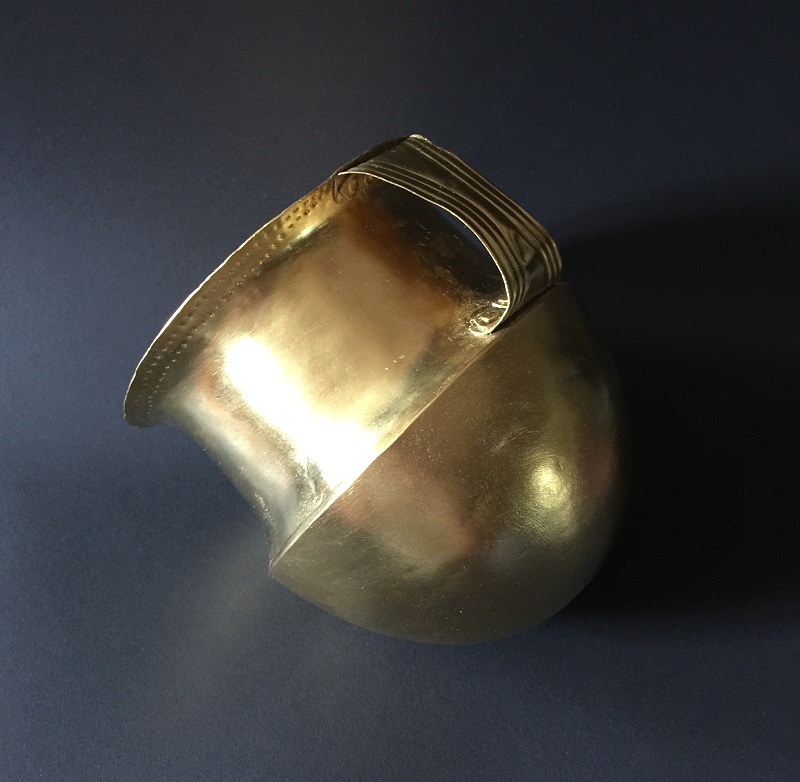
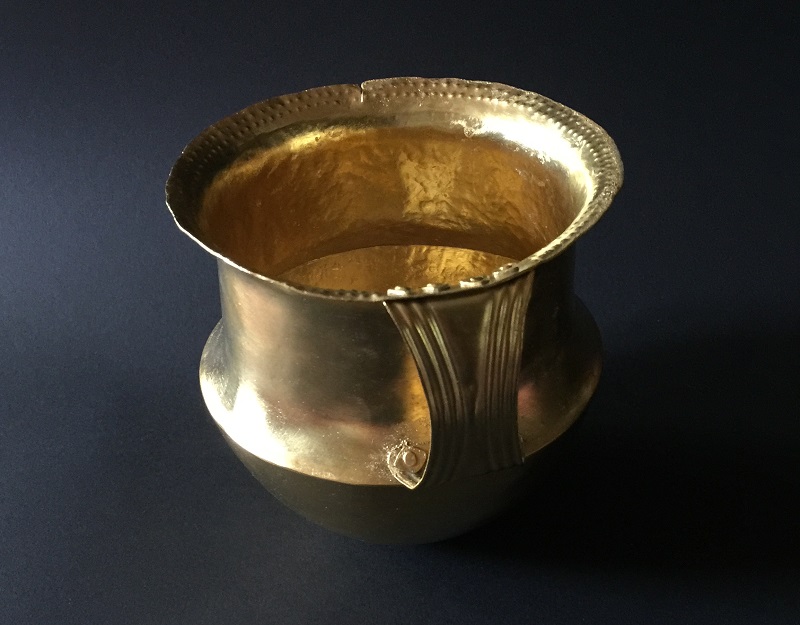
With the execution of this project we were obviously also able to convince our customer:
“… I would like to thank you… for the friendly and comprehensive advice and regular updates. Your professionalism really impressed me after the first emails. I was quickly convinced that I had chosen the right ones...”

